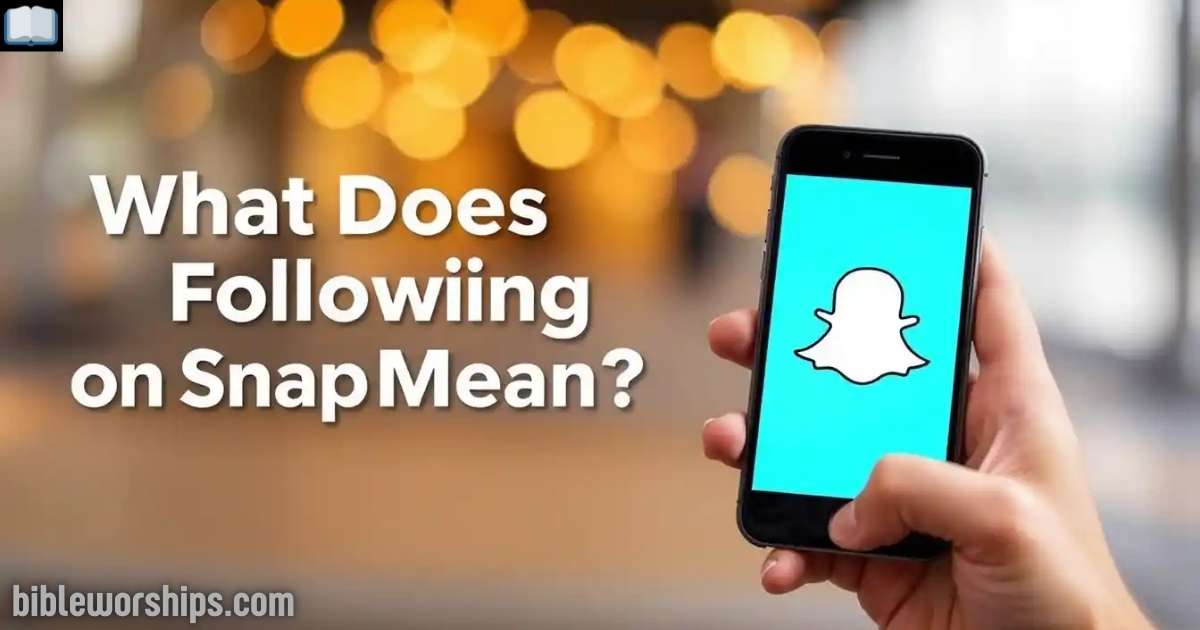Snapchat has evolved a lot over the years, and in 2025, its social dynamics are more nuanced than ever. If you’ve found yourself wondering, “What does ‘following’ mean on Snapchat?”, you’re not alone. With new features rolling out frequently, even long-time users can get confused.
This guide will help you understand the concept of “following” on Snapchat in 2025, how it’s different from being friends, how to check who’s following you, and how to manage your followers effectively. If you’re looking for the best explanation of what following means on Snapchat, you’re in the right place.
Understanding “Following” on Snapchat
Snapchat uses two types of relationships between users: “Friends” and “Followers.” These aren’t interchangeable, and in 2025, the difference matters more than ever—especially with Snapchat’s increased focus on public content through Stories, Spotlight, and Creator Profiles.
So, what does “following” mean?
When someone follows you on Snapchat, they are subscribing to your public content. This includes your public Stories, Snaps, or content posted via your Creator or Public Profile. However, they don’t become your “friend” unless you add them back.
Think of following on Snapchat as similar to Instagram or Twitter. A user can follow you without being in a two-way friendship. This lets influencers, creators, and even regular users share content with a broader audience without accepting friend requests from everyone.
Example:
- If Sarah follows a celebrity on Snapchat, she can view their public stories.
- But unless the celebrity follows Sarah back, they can’t see her Snaps or stories unless her profile is public.
Key Differences Between “Following” and “Friends” on Snapchat
Here’s a comparison table to make it clearer:
| Feature | Following | Friends |
| One-way or Two-way? | One-way | Two-way |
| Can see your stories? | Yes, if your profile is public | Yes, if you share with friends |
| Can send you Snaps? | Maybe (depends on your settings) | Yes |
| Appears in Chat List? | No | Yes |
| Can see Snap Score? | No | Yes |
| Notifications for Posts? | Optional (can enable alerts) | Yes |
In Short:
- Followers = Audience
- Friends = Mutual connection
Snapchat in 2025 clearly separates these roles so users can manage their privacy, engagement, and outreach better.
How to Know If Someone is Following You on Snapchat
Snapchat doesn’t send an obvious alert like, “You have a new follower.” But there are a few smart ways to figure out who is following you:
1. Check Story Views
If someone consistently views your public stories but you haven’t added them, they’re likely following you.
2. Visit Your Subscribers Count (For Public Accounts)
If you’ve enabled a Public Profile, Snapchat shows how many people follow you under the “Subscribers” tab. Some creators also get a badge that says “X Subscribers.”
3. Send a Snap
If you send a Snap and it says “Pending”, they probably haven’t followed you—or you haven’t added them back.
Managing Your Followers on Snapchat
Privacy and control are key. Snapchat gives you several tools to manage who follows you and how they interact with your content.
1. Check Who You Are Following
To see who you’ve followed:
- Go to your profile.
- Tap on My Friends.
- Anyone listed here that doesn’t show a mutual connection or friendship emoji is likely someone you’re just following.
2. Remove Someone You’re Following
If you no longer want to follow someone:
- Tap on their profile.
- Tap the three dots (⋮) in the top right.
- Choose “Unfollow” or “Remove Friend”.
Note: Removing them doesn’t block them, but it stops their content from appearing in your feed.
3. Adjust Your Privacy Settings
If you want complete control over who can follow you or see your stories:
- Go to Settings > Privacy Control.
- Set “Who Can Contact Me” to “Friends.”
- Set “Who Can View My Story” to “Friends” or “Custom.”
- Under “Public Profile”, you can choose whether to show subscriber count, location, and other details.
You can also turn off Quick Add, so strangers don’t randomly find you through mutual friends.
Common Scenarios and Texting Examples
Understanding how following works is easier when you see it in action. Let’s go through a few real-life texting examples and scenarios:
Scenario 1: You Followed a Friend, But They Didn’t Add You Back
You: “Hey, I followed you on Snap—did you see it?”
Them: “Yeah, I saw it, but I don’t really use it much.”
👉 This means they haven’t added you back. You’ll only see their public stories (if any).
Scenario 2: Someone Keeps Viewing Your Stories, But You Don’t Know Them
Friend: “Who’s that person watching all your stories?”
You: “No idea. Must be a follower. I have a public profile.”
👉 Followers can see your public stories even if you never interacted.
Scenario 3: You Don’t Want Someone Following You Anymore
You: “I just unfollowed and removed them. They were watching everything.”
👉 Simple fix using the “Remove Friend” or “Block” option.
Scenario 4: You’re Trying to Build a Public Presence
You: “I set up a Creator Profile and now I’ve got 500 followers!”
👉 Snapchat now supports influencer tools similar to TikTok and Instagram, letting you track subscribers and engagement.
Final Thoughts
Snapchat in 2025 has clearly moved beyond just private Snaps and close friends. With the rise of Public Profiles, Creator accounts, and monetized content, understanding what “following” means is more important than ever.
Whether you’re a casual user, a digital creator, or just curious about who’s watching your stories, knowing the difference between “followers” and “friends” gives you more control and confidence in how you use Snapchat.
So next time you ask, “What does following mean on Snapchat?”, remember: it’s about visibility, reach, and privacy. And the best way to navigate Snapchat is by staying informed, updated, and in control of your audience.

My name is Razzaq, and I have been writing about Bible verses and prayers for a long time. My deep understanding of these topics allows me to create high-quality content. The information I provide is always 100% accurate, ensuring that readers receive reliable and valuable insights.

